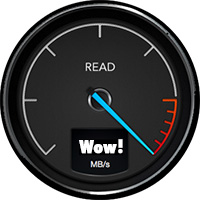Passions run high when we talk about the software upon which we base our business. Last week, I wrote an article examining why Final Cut Pro 7 editors should consider Adobe Premiere Pro CC. (Read it here.) I was fascinated by all the comments.
This week, I want to take the same approach and look at Final Cut Pro X.
HISTORY

Final Cut Pro 7 was released July 23, 2009, along with the rest of the Final Cut Studio (3) suite. FCP 7 was last updated in late 2010 to version 7.0.3. Since that time, a lot of technology has changed. Final Cut Pro 7 has not.
Final Cut Pro 7 was never designed for today’s operating systems. While it still runs on OS X 10.9 (Mavericks), many of its plug-ins do not. And no one expects FCP 7 to run on all future OS updates. This means that current FCP 7 editors are forced to make a choice:
If you are in the middle of a big FCP 7 project using hardware and software that is working fine, then don’t switch. Finish the project. Worry about what to do only after the project is complete.
But, if you are ready to move on, this article can help you decide what to do.
CLEARING THE AIR

Before we compare FCP X to FCP 7, I need to clear the air on three points that keep reappearing in my email.
1. “If I wait a bit longer, will Apple bring back Final Cut Pro 7?” No. Final Cut Pro 7 has run its course. Development is stopped. It is not coming back. Put a fork in it, it’s done.
2. “Apple made me really angry when FCP X was launched.” True, the launch was not one of Apple’s best. In fact, the initial release of FCP X was widely criticized. But don’t let the launch blind you to what Final Cut Pro X has become:
3. “Apple took the easy way out by creating iMovie Pro.” If Apple wanted to take the easy way out, it would have added a couple of small features to FCP 7, incremented the version number and called it a day. There are dozens of Apple staffers working on Final Cut Pro X every day – an investment of millions of dollars a year. Nobody does that for a “throw-away” product.
If you enjoy being angry at Apple, fine. But, if you enjoy getting work done on-time and on-budget, then you have some very interesting options.
NOTE: I just discovered that there is a Final Cut Pro X Ecosystem page in the Mac App Store. Take a look.
LARRY’S POINT OF VIEW

Back in the 1980’s I wrote business-grade software. It wasn’t great, but it put one of my kids through college. I learned then that good software represents a way of thinking; a philosophy about how a task should be done.
Final Cut Pro 7 and Final Cut Pro X are good examples of this. FCP 7 is built on the philosophy of “how editing has always been done.” Starting with editing between two rolls of film, morphing into multiple tape decks and expanding into the digital world. This is a solid, traditional, totally understandable point of view.
Final Cut Pro X took a different approach. Apple started by asking: “What does editing look like in an all-digital world?” Then followed by asking: “What do editors who grew up in the world of computers and digital media expect?” Final Cut Pro X grew out of exploring the answers to those questions.
This resulted in major changes to media management, the interface, and the process of editing. Apple’s view is that modern, digital video editing software should take advantage of the huge amounts of metadata available from cameras and audio devices and the power of computers to help users tag, filter, and sort media in ways they never could before.
Media management has become more robust, more flexible and supports far more devices than FCP 7. Apple has continued to refine this as FCP X continues to evolve.
And thinking of the interface – another major change – it shifted from a light-gray background to a dark-gray background; similar to iMovie… and DaVinci Resolve, Autodesk Smoke and Photoshop. Dark gray makes colors easier to see.
PERFORMANCE

Every week, I build a one-hour show using Final Cut Pro 7. It’s a template I created five years ago for my podcast: Digital Production Buzz. It takes me ten minutes to update the sequence template; then an hour and a half to render and export the master file. To make it go faster, I make sure nothing else is running on the computer during the export. In fact, I have dedicated an older Mac Pro running OS X 10.6.8 just for this one weekly project.
NOTE: Final Cut Pro 7 only effectively used 1 processor and, with just a few exceptions didn’t support the GPU at all. Also, because it was only 32-bit enabled, FCP 7 would only access 4 GB of RAM, regardless of how much RAM was installed on your system.
Because FCP 7 was so slow, Final Cut Pro X is all about speed – blinding speed – and moving as much work to the background as possible so you can be doing creative work without waiting for something to finish.
Final Cut Pro X has a modern architecture built to take advantage of multiple CPUs, multiple cores, multiple GPUs and its support for 64-bit memory addressing means that FCP X can use all the RAM you can give it.
While FCP X is highly optimized for the new Mac Pro, including dual-GPU support throughout the graphics pipeline for real-time effects playback, rendering, video monitoring, and Optical Flow analysis, it also runs extremely well on all current MacBook Pros and iMacs.
One thing that continues to surprise me about the app is how fluid it is. I can be playing a sequence, while opening and closing other windows, zooming into and around the Timeline, all without dropping a frame on playback. It is enormously responsive; even on a two-year-old iMac.
To give you an idea of how cool this is, you can be importing clips, exporting a project, rendering effects and editing – all at the same time; even on an iMac.
THE TIMELINE

Feeding the need for speed is most evident in the Timeline. Probably the biggest feature is the “Magnetic Timeline.” This replaces the concept of tracks (like FCP 7) with layers (like Photoshop). It also means that clips edited to the Timeline are “attracted” to each other; preventing unwanted gaps or one clip accidentally overwriting another. While this takes a bit to get used to, it totally removes the worry about where the playhead is positioned when editing clips to the Timeline.
I find editing using the Magnetic Timeline is amazingly fast. And, when you need a clip to move to a specific spot, the Position tool overrides the “magnetic” part of the Timeline so you can precisely position a clip.
Apple redefined “state-of-the-art” when it released multicam editing in FCP 5. Final Cut Pro X takes multicam editing to an entirely higher level. FCP 7 doesn’t even come close.
A new feature, called the “Timeline Index,” provides a fast way to see, search, jump to, or filter all clips, markers, roles and tags in the active project. It offers faster and more flexible find and selection features than Find in FCP 7. I also use the Timeline Index to quickly review all chapter markers in a project for the correct spelling.
Nests in FCP 7 have become compound clips in FCP X. Roles, which are new, allow us to tag video and audio elements to control what gets displayed or exported. (Think of creating a single project containing both English and Spanish voice-overs and titles. We can change a Role setting and export two files from the same project the same time: one English and one Spanish.)
NOTE: While FCP 7 allows multiple sequences to be displayed in the Timeline at one time, FCP X only allows one sequence (called a “project”) open in the Timeline at a time. However, you can quickly jump from one sequence to another using the Browser.
WORKING WITH MEDIA

The database FCP X uses for tracking media allows more and better clip metadata, and better file organization.
Skimming allows us to review the audio or video contents of a clip, without first opening it in the Viewer. Skimming makes browsing clips far faster and easier than FCP 7.
Scratch disks have morphed. Now, we have Libraries. These are master “containers” which are similar to FCP 7’s project files. Libraries hold everything we work on during a project: media, work files and edits (called “sequences” in FCP 7, “projects” in FCP X). Libraries can either store media (“Managed Media”) or point to media stored in external folders (“External Media.”) The ability to consolidate media all in one place makes copying, moving, sharing, managing and archiving a lot easier. Media can be stored anywhere and that storage location can vary by project. (Storing media by project was a major hassle in FCP 7.)
And, like FCP 7, we can open multiple Libraries at the same time and work with media or projects stored in any open Library. Libraries can be opened or closed whenever we want.
Imported media can be organized by folder (Event), rating or keyword. (FCP 7 only supported organization by folder.) While keyword management is awkward when more than 30 keywords are used in a project, search speeds using rating or keywords are virtually instant.
Creating high-quality optimized (edit master) and proxy files can be done automatically on import. Rendering and transcoding run in the background and is optimized for ProRes 422 and ProRes 422 Proxy.
NOTE: An interesting behind-the-scenes feature is that media that is shared between FCP X, Compressor and/or Motion is ColorSync-managed during rendering.
Switching between original and proxy files in FCP 7 took 17 separate steps. (I know because the article I wrote explaining how to do it was my most popular article for almost 18 months.) Now, switching between camera native and proxy media is a radio button and the media switches instantly.
Final Cut Pro X provides native, real-time support for professional video codecs like ProRes 4444 XQ and Sony XAVC along with more common codecs such as H.264 and AVCHD. In fact, FCP X fully supports the entire ProRes family throughout import, editing, rendering, and export.
NOTE: For a full-list of FCP X supported cameras and codecs click here.
WORKING WITH AUDIO

Waveform display in the Timeline is bigger, more accurate and more adjustable. We can also display reference waveforms, which are a “ghosted” image of what the audio would look like if it were normalized.
Audio elements of synced clips are no longer separate clips. It is impossible to accidentally knock audio out of sync. Working with multichannel audio is just as flexible as FCP 7, without the risk of knocking clips out of sync. Double-system audio can be synced automatically based on matching waveforms.
Audio fade transitions have been replaced by adjustable fade “dots,” with the ability to change the shape of the fade.
And all the great Logic/Soundtrack Pro plug-ins migrated to the latest version of Final Cut, with the ability to adjust the plug-in directly in its own interface within FCP X.
NOTE: FCP X also provides a variety of audio repair tools, though, truthfully, if I have problem audio, I’m moving it to Adobe Audition for repair and mixing. On the other hand, for audio newbies, the audio repair features in FCP X are easy to use.
WORKING WITH EFFECTS

Like FCP 7, FCP X enjoys massive support from a wide variety of 3rd-party developers, including all the companies you used in FCP 7. Plus, there are new effects and utilities that exceed what we could do in Final Cut 7.
The chroma-keyer in FCP 7 was a dog. Beyond useless; and I’m trying to be kind. The chroma-keyer in FCP X is amazing. The default settings create stunning keys.
Final Cut Pro X uses Motion as its graphics engine. In fact, all effects in FCP X are actually Motion projects saved in such a fashion that Final Cut can access them. Like FCP 7, we can create animated titles in Motion which can be opened in FCP X, retaining all animation, but allowing customized text and text formatting. But the integration of Motion with FCP X is much more extensive than in FCP 7. You can customize any parameter in a Motion template, then export those controls directly into Final Cut to create modifiable effects from a Motion template inside Final Cut.
Aside from the confusing decision to redesign the color wheel as a rectangle, which I find totally unintuitive and awkward, the color correction in FCP X is better:
Apple has also improved the display of all the video scopes, though I miss the small line for measuring specific values and percentage indicators on the Vectorscope.
NOTE: For truly powerful color correction, DaVinci Resolve imports FCP X XML files easily with a single mouse-click, without having to prep files for color grading.
WHAT TRANSFERS WHEN YOU SWITCH

To move projects from Final Cut 7 to Final Cut Pro X requires a separate, and very inexpensive, utility – 7toX from Intelligent Assistance – and three steps:
When transferring files using XML, all media and edits transfer perfectly. Dissolves and audio levels generally transfer fine. However, effects, titles, and color correction will not transfer properly.
NOTE: Because XML is required to move projects from FCP 7 to FCP X, it is critical that you export to XML any FCP 7 projects that you might want to transfer in the future. Without an XML version, or a working copy of FCP 7, you won’t be able to move any old projects to FCP X. (Or Premiere Pro or Avid, for that matter. All these apps require XML to transfer FCP 7 projects.)
SUMMARY
Change is scary. Change which has the potential to affect our business is terrifying. But we live in an industry based on technology. Change is inevitable. The key is to accept that change is as part of life, plan for change, and keep learning so that when changes come, we are ready.
We won’t be able to stay with the past much longer. FCP X is fast. It is fluid. And it handles the technology so we can concentrate on editing.
As always, let me know what you think.
73 Responses to Why Should Final Cut Pro 7 Editors Consider Final Cut Pro X?
← Older Comments Newer Comments →-
 Joel Peregrine says:
Joel Peregrine says:
August 5, 2014 at 9:44 am
-
 Larry Jordan says:
Larry Jordan says:
August 5, 2014 at 2:13 pm
-
 Joel Peregrine says:
Joel Peregrine says:
August 5, 2014 at 3:10 pm
-
 Ben Balser says:
Ben Balser says:
August 11, 2014 at 6:10 am
-
 Christian de Rezendes says:
Christian de Rezendes says:
August 7, 2014 at 2:56 pm
-
 Larry Jordan says:
Larry Jordan says:
August 7, 2014 at 3:52 pm
-
 Christian de Rezendes says:
Christian de Rezendes says:
August 7, 2014 at 3:55 pm
-
 Larry Jordan says:
Larry Jordan says:
August 7, 2014 at 4:16 pm
-
 Bob Griffiths says:
Bob Griffiths says:
August 8, 2014 at 8:44 am
-
 Larry Jordan says:
Larry Jordan says:
August 8, 2014 at 12:24 pm
-
 Ben Balser says:
Ben Balser says:
August 11, 2014 at 6:12 am
-
 Roger Good says:
Roger Good says:
August 8, 2014 at 9:23 am
-
 Lewis Wilson says:
Lewis Wilson says:
August 8, 2014 at 9:29 am
-
 Larry Jordan says:
Larry Jordan says:
August 8, 2014 at 12:27 pm
-
 Doug Sparkman says:
Doug Sparkman says:
August 11, 2014 at 5:50 am
-
 m walsh says:
m walsh says:
August 8, 2014 at 9:42 am
-
 Jose says:
Jose says:
August 8, 2014 at 9:51 am
-
 Bill says:
Bill says:
August 8, 2014 at 10:48 am
-
 Bill says:
Bill says:
August 8, 2014 at 10:58 am
-
 Eric Kuehnapfel says:
Eric Kuehnapfel says:
August 8, 2014 at 11:48 am
-
 Roger Good says:
Roger Good says:
August 8, 2014 at 12:06 pm
-
 Phil Davison says:
Phil Davison says:
August 8, 2014 at 1:44 pm
-
 David Jahns says:
David Jahns says:
August 8, 2014 at 5:56 pm
-
 LarryJ says:
LarryJ says:
August 9, 2014 at 8:06 am
-
 Marc says:
Marc says:
August 22, 2014 at 4:21 pm
← Older Comments Newer Comments →“It has more than 1 million registered users, larger than the installed base of FCP 7”
Of course – Final Cut Pro hasn’t been offered for sale since 2011, when FCP 7’s had a user base of 2-3 million with an average revenue per user of $1000. In 2007 FCP was used by 49% of all US based professional editors. That FCP X has been a “success” for Apple can not be thought of as anything except wildly exaggerated.
Joel:
Your numbers are a little skewed. FCP 7 did not have that large an installed based. The combined base of FCP 5, FCP 6 AND FCP 7 may have approached that.
At the time FCP 7 was discontinued, the installed base of FCP 6 was larger than FCP 7.
Larry
What are your sources? I’m finding conflicting numbers all over the web, like this prediction from Philip Hodgetts made before the introduction of FCPX:
“Almost all those 2 million Final Cut Pro customers will immediately buy Final Cut Pro X”
“At the time FCP 7 was discontinued, the installed base of FCP 6 was larger than FCP 7.”
Larry, where is that information?
I have been working on a very lengthy and large doc project for years now in FCP7. I plan to get Premiere so i can work on both systems, but I also know I need to upgrade my OS. I have well over 100 sequences and over 1TB of footage. If I export the XML out of FCP7 for a FCPX upgrade, WILL ALL MY FILES, SEQUENCES and more be saved? I understand it doesn’t convert titles and color correction, so I’m not worried about that because I haven’t done that yet. I just want to know and be assured that I’m not going to screw up years of work. Thank you =)
Christian:
Whether you move to FCP X or Premiere, you will need to export your sequences in FCP 7 to XML. Select what you want to move in the FCP 7 Browser – both clips and sequences, then export as XML.
XML does NOT touch your media, it only lists the paths to your media. So media is not changed in this conversion. Both Premiere and FCP X can import that XML file (in FCP X’s case, it needs to convert it using 7toX) and – assuming you have not moved or renamed media files, all your media, edits and dissolves will transfer perfectly.
Text will transfer but lose formatting.
Most effects and color grading won’t transfer at all.
It is ALWAYS good to do a test to see how the process works before doing it “for real.” However, since the original FCP 7 project is NOT changed during this process, you can export multiple times until you are happy with the results.
Larry
Larry, thank you. Since I have 100 or more sequences within the same project, do I have to export an XML for each one of those individually? Or more directly, what is the best and easiest way for me to do a GRAND XML of EVERYTHING so it will all go out in one file and look exactly how it should in X and it does in 7?
Christian:
Well, the easiest, but not necessarily what I would recommend, is to select EVERYTHING in the FCP 7 Browser then, export it all as an XML.
What I would recommend is to export everything in at least two clumps:
* Stuff that is currently being worked on – for one library
* Stuff that is being retained but no longer active – for a second library
This decreases the total number of elements stored in a single library and will make your system more responsive.
Larry
“FCP X also provides a variety of audio repair tools, though, truthfully, if I have problem audio, I’m moving it to Adobe Audition for repair and mixing.”
Larry,
No mention of Logic Pro X? I have not bought the program yet but I am looking at it for repair, mixing and enhancement. The enhancement part comes from it’s roots as an audio creation tool. Am I delusional?
Bob:
Um, I can’t speak to you being “delusional” aspect, however, Logic has always been VERY strong at music creation.
While I have not looked at the latest version, traditionally, audio repair and mixing were not its strengths.
Larry
Audio mixing is it’s biggest strength! It is a professional DAW, mixing and mastering are vital to that. Repair, not so much, but mixing? How can you say Logic Pro is not good for mixing?
Regarding the theory that the development team was axed as a step toward abandoning NLE altogether – where does that thought come from? I think it is worth noting that the product manager for FCPX is Steve Bayes, who literally wrote the book for AVID. When I was considering what our school would do with its 200 FCP7 licenses I spoke with him and came away reassured that the decision to go with FCPX with its new paradigm was extremely well considered by the best brains in the business. It’s impressive upgrade history bears me out. The launch scared me, too, but I understand the quandary: FCP7 was done, FCPX wasn’t really ready, but it was time to move forward and 7 wasn’t a smart place to build on.
I have definitely drunk the Kool-Aid.
Hi Larry. I have a documentary project that I started in FCP X, but I found that FCP X really did a lousy job with the still photos I needed to include. The stills came out to be very fuzzy looking in FCP X. I did the same project in iMovie, and the stills, (and with the Ken Burns effect applied), looked GREAT. Is this unacceptable handling of still photos in FCP X a flaw in the software ? I tried converting the high pixel count original stills to various smaller-pixel-dimensioned versions–I got the same poor results in FCP X. Can you shed some light on this. [The majority of the documentary is composed of standard definition video. There will be some HD footage included and rest is stills–jpeg and tiff.) Because of these problems I was considering redoing the whole project in Adobe Premiere or Avid. Please advise and thanks in Advance. Louie
Lewis:
BY DEFAULT, FCP X displays video during playback at lower resolution so the CPU is available to create effects in real-time.
However, this is a playback issue only, images export at the highest quality. My guess is you were looking at the display, not testing the export. Had you done so, you would have stayed in FCP X.
here’s an article that can help:
http://www.larryjordan.biz/fcpx-101-performance-preferences/
Larry
Larry and Lewis,
This could also be related to the fact that FCPX automatically makes the resolution of the movie the same as the first clip you put in the timeline (unless you override the automatic settings). You said that most of your project is SD. If you put an SD clip in first, it will lower the resolution of everything to SD.
I do video as a hobby and on the side. I am at the low end as most of my work is in editing home movies for people, and most of those are SD. If I use the automatic SD setting the titles and graphics look horrible. I have to put SD clips into an HD project to get HD graphics.
I think it is interesting that no one talks about how you have to buy the different editing programs on the market.
The way you can purchase X appeals to me instead of paying for every month or yearly.
it is possible to use FCPX on a mini-Mac?. Thanks
You can use FCPX on any Mac Apple sells, but performance is the key issue.
If you’re just editing simple projects, a Mac mini will work fine (assuming you have more than its base 4 GB of RAM), but if you’re doing something major you’ll likely want to use a platform with a dedicated GPU.
I like to tell people FCPX will work on anything (as did FCP 7 for that matter), the question is how patient you are should lags in operation and processing occur.
Of course this overlooks the issue of whether you PREFER the old-school paradigm.
I don’t want operations to just happen; I only want anything to happen when I’ve chosen precise in and out points by time code and have chosen a commensurate in point on the timeline. I want tracks where I can see overlaps, apply specific transitions and see each element broken out. I also LIKE having all the media for a project in one place, and being able to specify capture, render and media directories and drives.
But the biggest issue I have with FCP X is that I do a lot of work with SD video on tape (yes, tape!) Old SVHS, 8mm, and DV/DVCAM. Capturing from these sources in FCPX is a pain in the neck, as it’s largely been designed to import from clip-based sources that store media on cards rather than import with nothing more than timecode (if even that) from Hi-8.
The interface changed a lot more than a simple gradation of gray. The lack of a source monitor caused such an uproar that Apple had to bring it back ASAP as an option. But in my opinion – which seems extremely isolated as nobody else seems to mind – Apple didn’t go far enough to restore the true functionality of the old source-record paradigm. If there was one thing the FCPX engineers could change in the UI to bring back the hordes that left, I think it would be a preference option to restore side-by-side source-record monitors as they currently exist in every other professional editing application, each with their own customizable edit buttons and timecode indicators. Tick-marks underneath the video, to help gauge where to plant your cursor on long-duration sources, wouldn’t be a bad idea also.
I think editing in an all digital world still needs wheels to roll, at least until brain signals can bypass our fingers to trigger an insert edit. No matter the speed or flexibility, the basics of editing is still about putting ‘this’ over ‘there’, and source-record was a wheel that rolled.
Yes, I’m praying for the ability to store layouts. I used that all the time in 7 as my project advanced through phases.
I think it depends on where you have come from.
My background before I ever got into video editing was in audio, specifically protools. When I took up video editing (in the mid 1990s) the source/record monitor paradigm always seemed clumsy to me since I’d never worked with tape-to-tape editing machines. I got used to watching the video on the the external monitor since it displayed a nice big picture and had the correct colour, and always made the monitors on the computer screen as small as possible. So now with a two mojito FCPX set up I have pretty much the same screen set up as I used to, way back.
But I can see that if you were used to linear editing the source/record windows would be very comfortable.
is anyone using FCP X in a multi-user collaborative environment?
That was the achilles heel for me when they released it – we’re a medium sized shop – 12 rooms, all using a SAN, sharing projects with 2nd editors & assistants, etc…
I’ve heard lots of goofy workarounds for trying to use FCP X in such an environment – but I still don’t see why we’d want to.
Avid still works quite well, Premiere is getting there – and both handle collaborative environments much better than X does (as far as I can tell.) Can anyone convince me to give me to give it another look?
David:
The answer depends upon whether, by “multi-user” you mean multiple editors sharing the same media at the same time – the answer is Yes – or multiple editors inside the same project at the same time – the answer is No.
Here’s an article that explains this in more detail:
http://www.larryjordan.biz/fcp-x-10-1-collaboration/
Larry
Rad Raven,
Awesome letter. I totally get where you’re coming from yet I don’t know FCPX yet aside from how my son uses it. For me editing has always been about storytelling and not creating bee-you-tifull eye candy. And that’s probably from having once been a film editor (began editing film in 1963 8mm, then 16mm in 1970, then 35mm in 1983) who turned Avid editor (1992), gingerly skipping over linear video editing along the way because it was all about typing numbers for the most part and my brain works visually via pictures, then auditorially via sound and finally through numbers via my invoice.
I just wonder if there’s a way to use Meta data to the advantage of storytelling. I still love a lined script. I always put markers on clips to remind me where the best beats are. I make tons of sub clips of the best performances, glances, eye blinks, head turns and whatever else I need to tell the story. I create and organize bins with info columns that can be sorted on all kinds of criteria that I create which relate to all my narrative story points, feelings, beats and any other piece of info that triggers my story radar. I can’t say much about meta data or how it would help my process, I simply haven’t used it much.
My creativity is unleashed by knowing where my material is so I can lay my hands on it immediately and by my hardware not getting in the way of playing back my last edit, by having a trim mode that is quick and versatile (I live in trim mode). I do love the digital way of editing. I could never go back to film. It would be torturous. “where’s that two frame trim. I saw it a minute ago!”
Please let me know what you learn as you journey further into the land of pixel pushing. Whether with FCPX or PP. Thanks
May the Schwartz be with you!